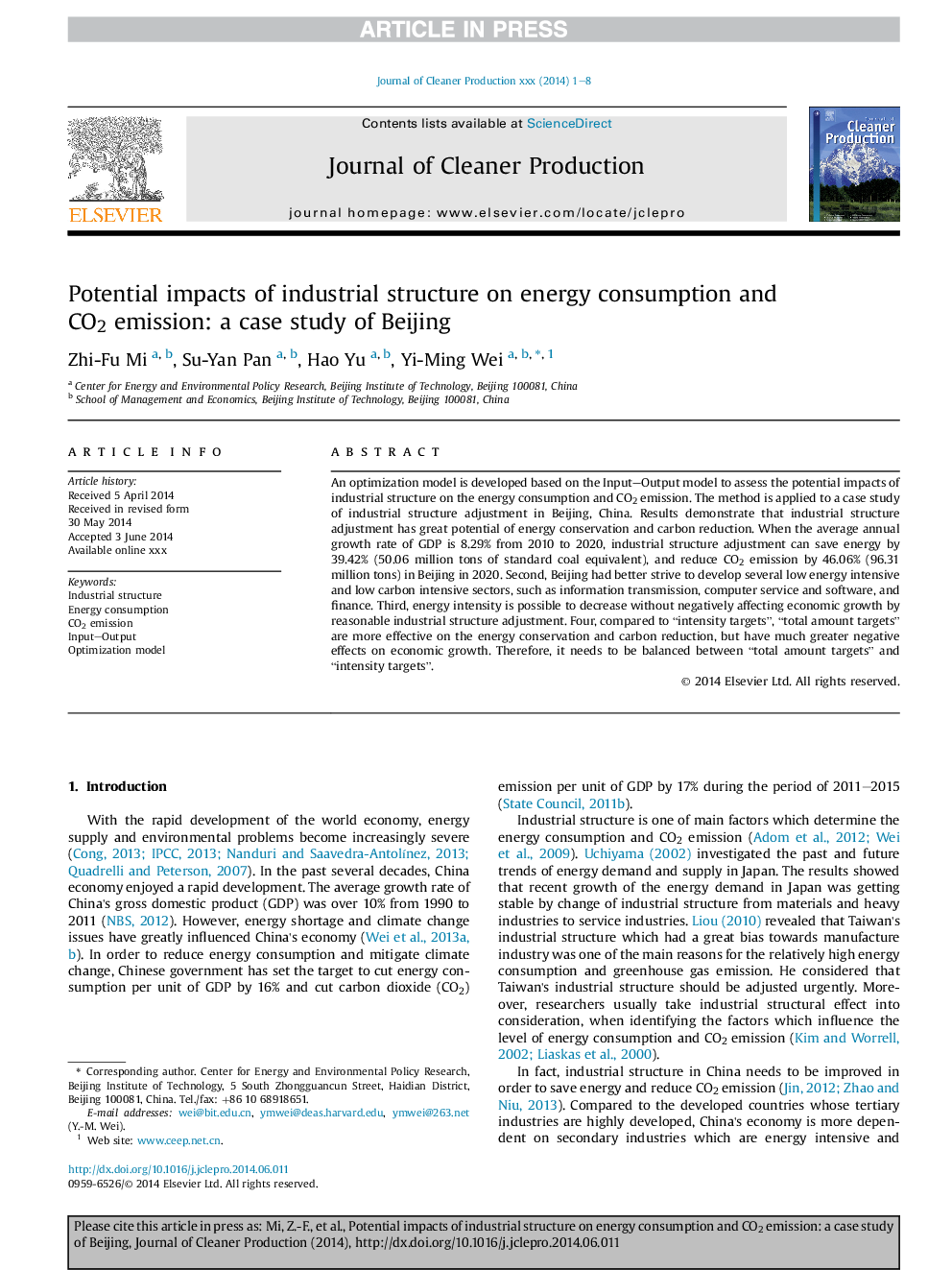| Article ID | Journal | Published Year | Pages | File Type |
|---|---|---|---|---|
| 8103578 | Journal of Cleaner Production | 2015 | 8 Pages |
Abstract
An optimization model is developed based on the Input-Output model to assess the potential impacts of industrial structure on the energy consumption and CO2 emission. The method is applied to a case study of industrial structure adjustment in Beijing, China. Results demonstrate that industrial structure adjustment has great potential of energy conservation and carbon reduction. When the average annual growth rate of GDP is 8.29% from 2010 to 2020, industrial structure adjustment can save energy by 39.42% (50.06 million tons of standard coal equivalent), and reduce CO2 emission by 46.06% (96.31 million tons) in Beijing in 2020. Second, Beijing had better strive to develop several low energy intensive and low carbon intensive sectors, such as information transmission, computer service and software, and finance. Third, energy intensity is possible to decrease without negatively affecting economic growth by reasonable industrial structure adjustment. Four, compared to “intensity targets”, “total amount targets” are more effective on the energy conservation and carbon reduction, but have much greater negative effects on economic growth. Therefore, it needs to be balanced between “total amount targets” and “intensity targets”.
Related Topics
Physical Sciences and Engineering
Energy
Renewable Energy, Sustainability and the Environment
Authors
Zhi-Fu Mi, Su-Yan Pan, Hao Yu, Yi-Ming Wei,
